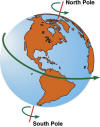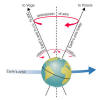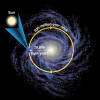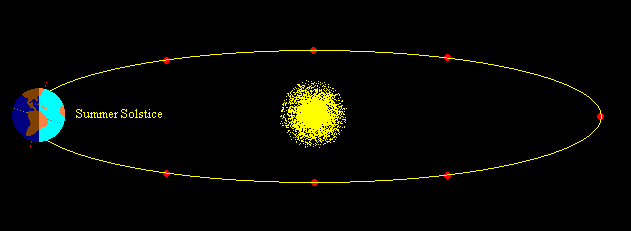




Summer in the northern
hemisphere Winter in the southern hemisphere |
|
Winter in the northern hemisphere |

NOTE: This is not to scale; in reality, the sun is a lot bigger to scale, and
Earth is a lot further away.
Page last modified: